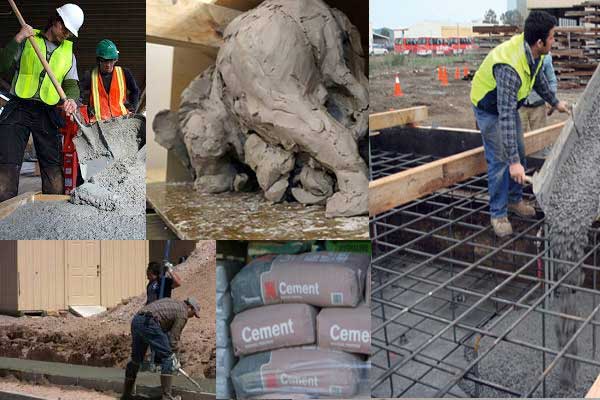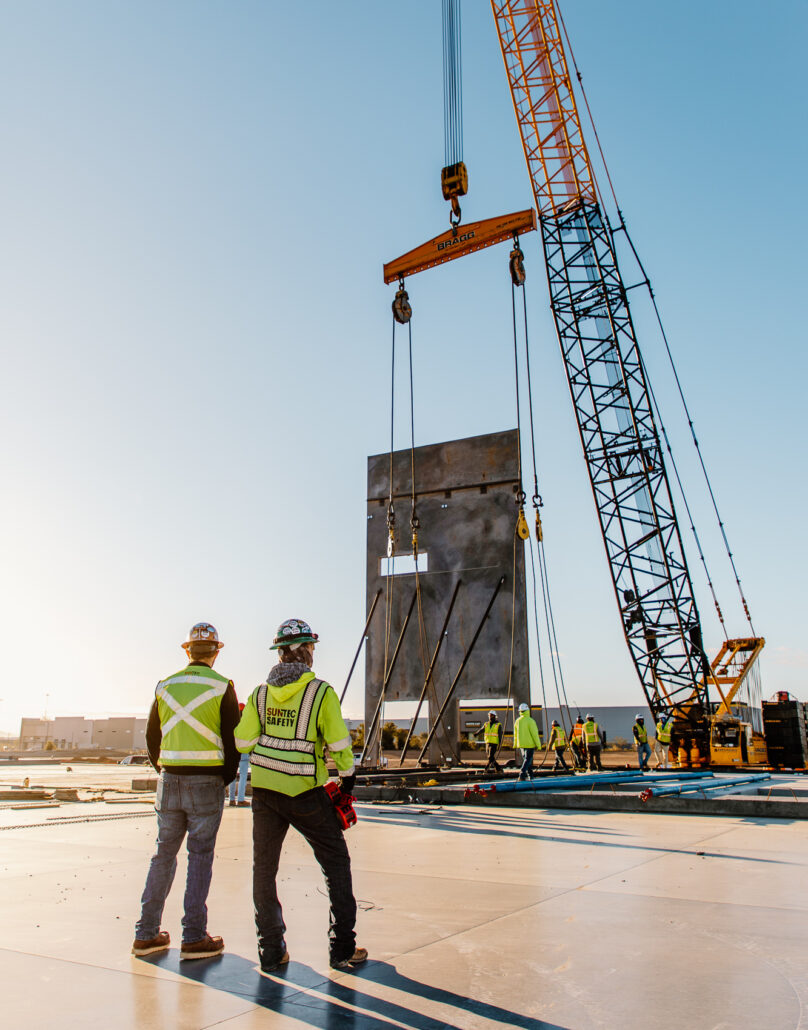The Crucial Duty of Concrete Foundation in Structural Integrity and Durability
When it comes to building a building, the foundation is a lot more important than you could assume. Concrete structures supply unmatched toughness and longevity, guaranteeing your framework can endure numerous environmental obstacles. Without a strong base, you risk potential concerns like shifting or fracturing, which can jeopardize safety and security and value. Comprehending the subtleties of concrete foundations might be the secret to preserving your financial investment for years to find. What should you think about following?
Understanding the Significance of Concrete Foundations
Concrete foundations are essential to the total stability of any framework, as they supply the vital support needed to endure different lots and ecological conditions. When you assume concerning constructing a home or an industrial area, the foundation is the first point you need to consider. It works as a barrier against dampness, shielding your home from water damage. A well-placed concrete foundation additionally avoids settling and shifting, which can lead to splits in wall surfaces and floors. You'll intend to guarantee that the foundation is correctly made and strengthened, as this influences the long life of your building. Additionally, a strong foundation can enhance energy efficiency by reducing air leaks. Keep in mind, ignoring the value of a concrete foundation can cause pricey repairs down the line. Investing in a quality structure upfront is vital for the honesty and toughness of your framework.
Benefits of Concrete Foundations for Architectural Integrity
While lots of aspects add to a structure's architectural stability, concrete foundations offer unrivaled toughness and stamina. You'll value that concrete can withstand extreme weather conditions, resisting both moisture and temperature level variations. This durability suggests your framework is less likely to experience breaking or moving in time, which can endanger its safety.Additionally, concrete's inherent weight supplies a strong base, stopping activity throughout all-natural occasions like earthquakes or floodings. When you pick a concrete foundation, you're also going with reduced maintenance; unlike timber, it will not rot or attract bugs, saving you money and time in repairs.Moreover, concrete's fire resistance uses included safety, ensuring your framework can withstand high temperatures without considerable damages. Overall, spending in a concrete structure implies you're prioritizing the long-lasting security and integrity of your structure, making it a wise option for any type of building task.
Usual Kinds of Concrete Foundations
When it concerns developing structures, recognizing the common kinds of concrete foundations can help you make informed selections for your project. The most widespread types include slab-on-grade, crawl space, and full basement foundations.A slab-on-grade foundation is a simple, cost-efficient alternative, where a thick concrete piece is poured directly on the ground. This kind works well in cozy environments, as it minimizes warmth loss.Crawl space foundations boost the home somewhat above ground, allowing for ventilation and access to plumbing and electric systems. This layout can aid stop moisture issues.Full cellar foundations supply extra living or storage space while offering exceptional architectural support. They call for even more excavation and are normally used in colder environments to avoid frost heave.
Elements to Consider When Designing a Concrete Structure

Ideal Practices for Setting Up Concrete Foundations
When you're setting up a concrete foundation, correct site preparation is important to ensure stability (West Coast General Engineering commercial concrete). You'll additionally need to understand support techniques to improve stamina and sturdiness. Do not forget the curing process, as it plays an essential function in attaining a strong structure.
Site Prep Work Significance
Although it may seem uncomplicated, appropriate website preparation is important for assuring a strong and durable concrete foundation. Start by clearing the area of any type of particles, plant life, or natural material that could compromise the structure's integrity. Next, assess the soil type and compaction; you may require to dig deep into or include products to create a steady base. Level the ground to guarantee even weight circulation and avoid clearing up problems in the future. Mounting correct water drainage systems is also important to protect against water buildup, which can weaken the foundation gradually. Mark out the foundation's dimensions accurately to lead the pouring procedure. By complying with these steps, you'll establish the stage for a successful concrete foundation that stands the examination of time.
Reinforcement Methods Clarified
When the website is correctly prepared, the following action in guaranteeing a sturdy concrete structure involves executing effective reinforcement strategies. You should begin by utilizing steel rebar, which gives tensile stamina and helps prevent cracking. Lay the rebar in a grid pattern, making certain it's raised utilizing spacers to maintain appropriate insurance coverage. Additionally, think about using wire mesh for additional support, especially in areas based on heavy tons. Don't neglect to connect the rebar junctions safely with cable. For bigger foundations, fiber support can enhance longevity, reducing the threat of shrinking splits. Always comply with local building codes and guidelines to guarantee compliance. By using these reinforcement methods, you'll considerably improve your foundation's stamina and durability, laying a solid groundwork for your structure.
Treating Refine Essentials
To ensure your concrete foundation cures appropriately, it is essential to keep appropriate dampness and temperature problems immediately after pouring. Start by covering the surface area with a damp cloth or plastic sheeting to retain moisture. This maintains the concrete moisturized, preventing cracks and making sure stamina. You need to additionally check the temperature level; optimal curing problems are in between 50 ° F and 90 ° F. If it's as well hot, haze the surface consistently to prevent fast dissipation. For winter, think about using protecting coverings to keep warmth. Goal for a healing period of a minimum of 7 days, as this is vital for ideal stamina development. By following these best practices, you'll improve your structure's durability and durability, ensuring structural honesty for years ahead.
Maintenance of Concrete Foundations for Durability
To maintain your concrete foundation strong and long lasting, normal assessments are essential. You ought to additionally assure efficient drainage solutions are in place to stop water damages. If you detect any splits, resolving them without delay will conserve you from larger issues down the line.

Normal Examinations and Assessments
While routine assessments and analyses might appear like a job, they're vital for maintaining the honesty of your concrete structure. By routinely looking for splits, shifts, or signs of wear, you can catch possible problems before they escalate right into expensive repair work. Seek any water merging around the structure or uncommon settling, as these can signify underlying problems. It's additionally a good idea to keep track of any kind of changes in your home's framework, like doors that stick or home windows that don't open efficiently. Keeping a document of your evaluations aids track adjustments with time, enabling proactive upkeep. Inevitably, these analyses assure your structure continues to be stable, supporting the long life and security of your whole framework. Don't overlook this critical aspect of homeownership!
Reliable Water Drainage Solutions
Regular inspections can expose issues like water drainage problems that might jeopardize your concrete foundation's stability. To avoid water build-up, ensure your rain gutters and downspouts straight water far from the structure. Installing French drains can properly redirect surface area and groundwater, reducing stress on your structure walls. In addition, grading the soil around your home helps guarantee that water moves away, rather than merging near your foundation.Consider utilizing sump pumps in areas vulnerable to flooding, as they proactively get rid of excess water. Consistently inspect for clogs in drain systems and clear them promptly. You'll safeguard your structure's stability and durability by taking these positive steps. Remember, reliable water drainage solutions are important for keeping a strong, durable concrete foundation.
Motivate Crack Services
When you observe splits in your concrete structure, resolving them immediately is important for preserving its longevity. Little cracks can quickly progress right into larger problems, jeopardizing the structural honesty of your home. Frequently evaluate your structure for signs of damages, such as straight or upright splits. If you spot any type of, do not wait-- fix them promptly. You can utilize epoxy injections or concrete patching compounds, which work for securing splits. Always follow the maker's directions and consider speaking with a specialist for considerable damages. Remember, timely repair work not only boost your foundation's longevity but also conserve you cash in the long run by stopping much more substantial repairs down the line. Remain positive, and get more info your foundation will certainly continue to be strong and secure.
Addressing Common Problems With Concrete Foundations
Concrete structures can deal with numerous issues in time, making it crucial to identify and resolve them quickly. One of one of the most common issues is splitting, which can happen because of temperature fluctuations or settling dirt. If you notice fractures, it's crucial to assess their dimension and deepness; small cracks can usually be sealed, while larger ones may require specialist evaluation.Water intrusion is an additional major worry. Excess dampness can lead to mold and mildew growth and architectural deterioration. Assurance correct water drainage around your foundation to reduce this threat. Additionally, look for signs of shifting or bowing walls, as this can show underlying problems with your structure's stability.Regular assessments are basic to catch these issues early. If you identify any type of worrying signs, do not be reluctant to get in touch with a structure expert. By staying positive, you can maintain the stability and long life of your concrete structure, ensuring your home continues to be secure and protected.
Regularly Asked Inquiries
Exactly How Does Soil Kind Impact Concrete Foundation Performance?
Soil kind significantly impacts concrete structure performance. If you have actually obtained expansive clay, for instance, it can cause shifting and cracking. Sandy soil might bring about settling. Comprehending your soil assists assure a stable structure.
Can Concrete Foundations Be Fixed if Harmed?
Yes, you can fix damaged concrete structures. Depending upon the degree of the damage, methods like epoxy injection or piece jacking can recover security. It's best to seek advice from an expert for efficient solutions.
What Is the Regular Lifespan of a Concrete Structure?
A concrete structure commonly lasts 30 to 100 years, relying on elements like soil problems, climate, and upkeep. You'll intend to watch on it to ensure it continues to be healthy throughout its life expectancy.
Are There Option Materials to Concrete for Foundations?
Yes, there are choices to concrete for structures, like steel, wood, and even recycled materials. Each option has special benefits and drawbacks, so you ought to consider your task's specific requirements when selecting the right product.
How Does Environment Impact Concrete Structure Resilience?
Environment considerably influences concrete foundation durability (West Coast General Engineering industrial concrete). Severe temperatures, wetness, and freeze-thaw cycles can compromise the product, bring about cracks and structural problems. You should think about regional climate conditions when preparing your foundation to assure long-lasting efficiency
Comments on “Is West Coast General Engineering industrial concrete Right for Your Facility?”